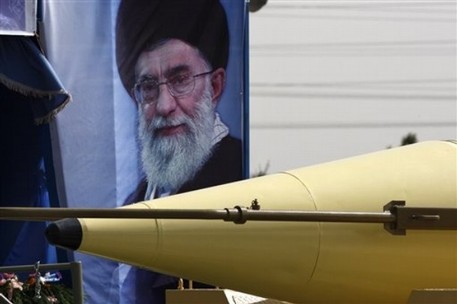Did Iran Do Anything Wrong?

Spencer Ackerman breaks it down:
Under the NPT, each state negotiates a safeguards agreement to the IAEA so the atomic watchdog can work out where and how to establish monitoring devices like cameras at declared facilities. “Iran’s specific safeguards agreement doesn’t say anything about the time limits for the provision of design information,” says Ivanka Barzashka, an analyst with the Federation of American Scientists’ Strategic Security Program. Specific time-frames for site or design disclosure typically occur in additional “subsidiary arrangements,” and usually provide for disclosure around 180 days before the introduction of nuclear material into a given facility. But Iran’s subsidiary arrangement with the IAEA “has not been made public as far as I know,” Barzashka says.That said, in its Aug. 28 report, the IAEA criticizes Iran for not adopt implementing a section of its subsidiary arrangement that dealt with design notificiation. “The absence of such information results in late notification to the Agency of the construction of new facilities and changes to the design of existing facilities,” the IAEA warned. Barzashka translates that such adoption would require Iran to notify the IAEA “of the construction of a new plant, any kind of new facilities, as soon as a decision has been authorized by the government.”
And that clearly hasn’t happened. According to an U.S. intelligence official who would only speak on background, “We’ve known about this facility for years. Over time, a clearer picture evolved of Iran’s intentions and activities at this covert site — one that, it turns out, wasn’t unknown to us.”
So as the saying goes, don't hate the player, hate the weak international regulatory system that lacks the means and the will to draw clear lines of behavior for a rogue and recalcitrant regime such as Iran. Or something like that.
And therein lies the problem with the IAEA and the NPT as a whole: they in fact enables the most questionable of regimes to stall and prolong the process of nuclear disarmament; putting the international community in a position of weakness as said regimes use perfunctory benchmarks and protocols to leverage for time and incentives.
Any country that really, really wants nuclear weapons and has the means of doing so likely can by simply not declaring their activities. On the other hand, any country that does wish to declare will likely enjoy countless concessions and financial packages for so kindly not building a WMD.
Want your trade sanctions lifted, or WTO access? Simply tell the world you intend to blow them up. Works every time.
In the case of Iran, you don't build a mountain-fortified nuclear facility because you truly believe you're on the up and up with the world powers. You do this because you expect to face scrutiny over such a facility, while relying on the ambiguity of the NPT to keep the United States at bay.
(Credit: AP Photos)





